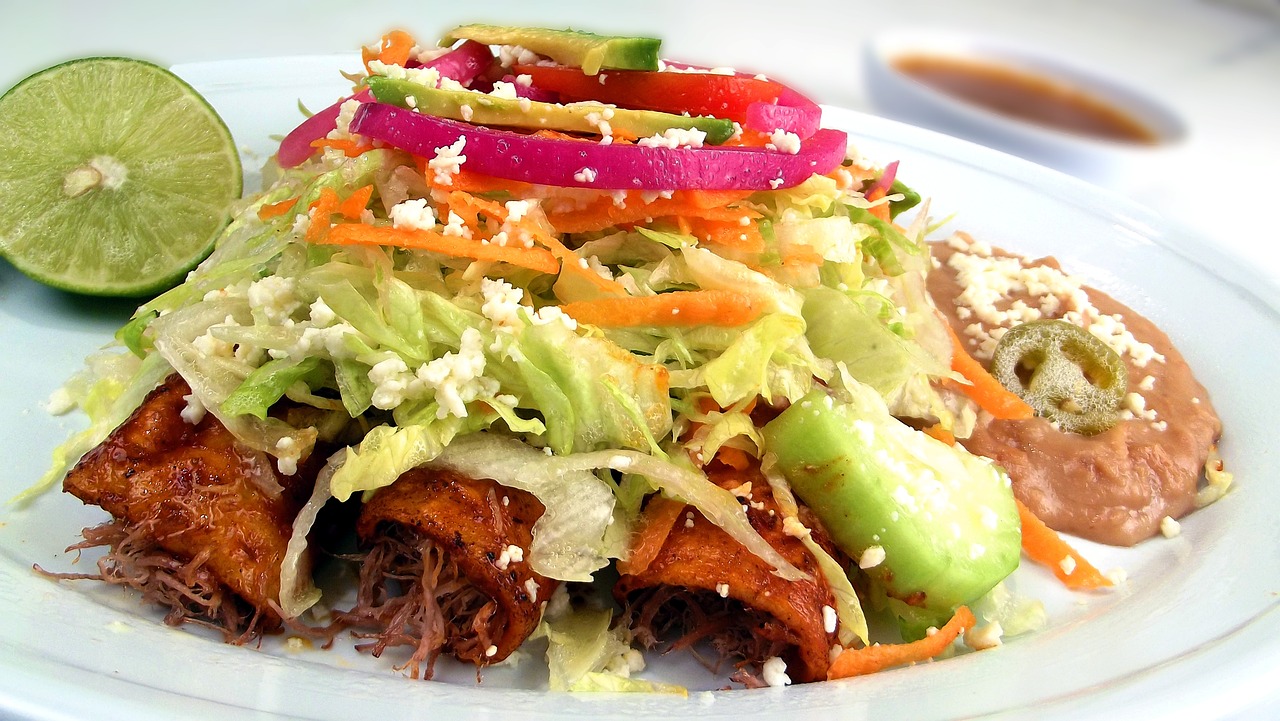Hola amigos! Are you ready to know about the best spices for Mexican food? From the smoky heat of chipotle to the bright citrus burst of lime, the right blend of spices can take your tacos, enchiladas, and guacamole to the next level.
The perfect blend of spices is a crucial component in any delicious Mexican dish. We’ve all heard of the usual suspects like cumin and chile powders, but let’s dive deeper and explore some of the best lesser-known spices that will take your tastebuds south of the border. The right blend of spices can make all the difference in bringing depth and complexity to your meals. So let’s dive in, explore the wonderful world of Mexican spices, and get ready to add some fiesta to your flavor!
The Best Spices for Mexican Food
Achiote
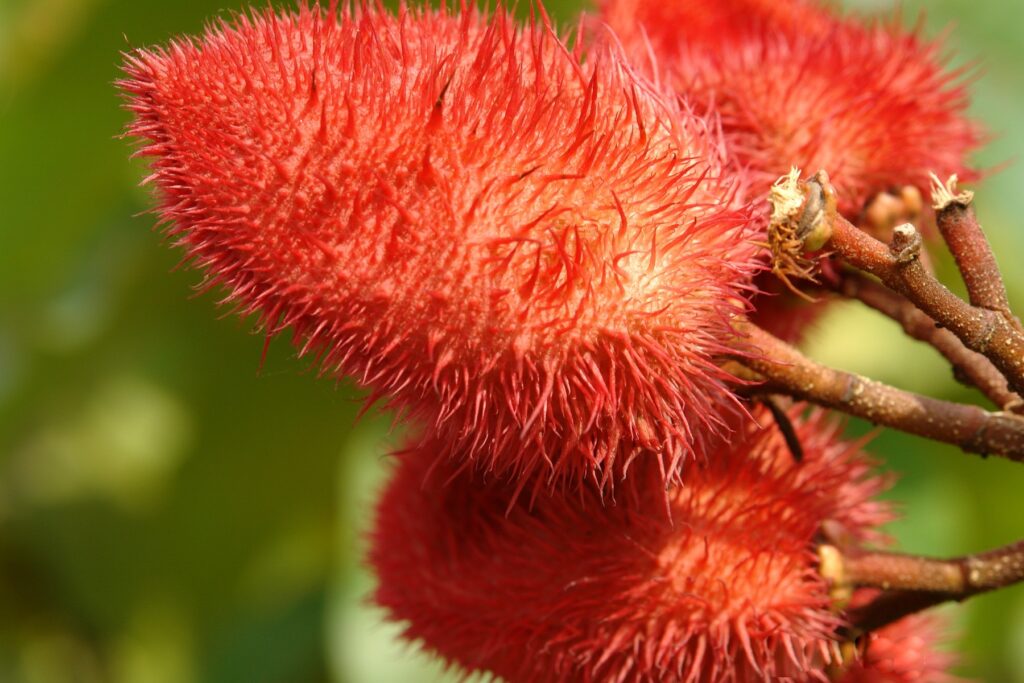
Mexican cuisine is renowned for its rich flavors and distinctive spices. And no spice is more synonymous with Mexican cuisine than Achiote. Used for centuries in traditional Mexican cooking, Achiote is a natural coloring and seasoning agent that imparts a vivid orange hue and a subtle, earthy flavor to food.
But what makes Achiote the best spice for Mexican food and why it’s an essential ingredient in many classic Mexican dishes?
1: A Versatile Spice
Achiote is a versatile spice used in various forms – whole, paste, or powder. It can be mixed with olive oil, vinegar, or citrus juice to create a marinade for meats or fish. In its paste form, Achiote can be mixed with other spices to create delicious rubs and sauces for barbeques, stews, and soups. Moreover, you can add its powder form right into the cooking process to flavor various dishes.
2: Enhances The Flavor of Mexican Dishes
Achiote’s flavor profile is unique, often earthy, peppery, and slightly sweet. This incredible spice contributes to the flavor of some of the most iconic Mexican dishes like Cochinita Pibil, a slow-roasted pork dish from the Yucatan Peninsula, and the famous Tacos al Pastor filled with meat marinated in Achiote and grilled on a spit.
3: Adds a Splash of Color to Food
Achiote’s bright orange-red hue is extracted from the pulp surrounding the small, dark seeds of the Achiote tree. It provides a rich, colorful accent to food that adds visual vibrancy to dishes like Tamales, which get their yellow-orange color because of Achiote.
4: Rich in Antioxidants
According to traditional herbal medicine practices, Achiote is a good source of antioxidants that promote healing and wellness. It contains carotenoids and flavonoids, which are known to fight inflammation, improve eye and skin health, and boost immunity.
5: Linked to The History and Culture of Mexico
Achiote was used by the ancient Maya and Aztecs for various purposes, from body painting to food coloring. However, this spice has come to symbolize the flavors and aromas of Mexican cuisine as a whole, representing the fusion of indigenous ingredients and colonial influence.
From its unique flavor profile to its health benefits and cultural importance, it’s clear why Achiote is a must-have spice in Mexican cuisine.
Chili Powder
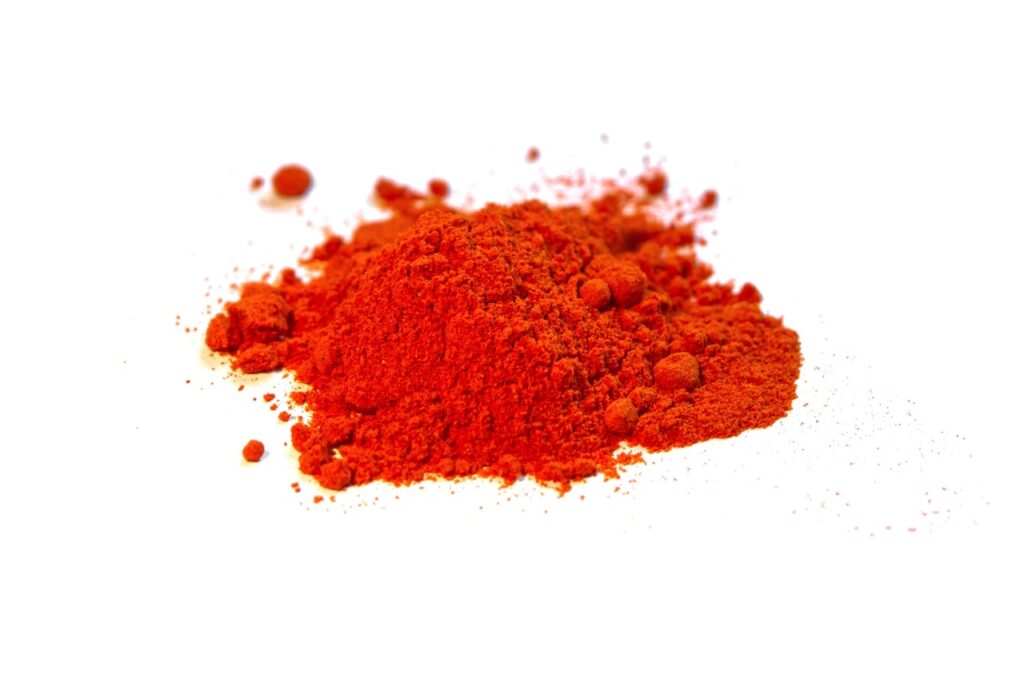
Mexican dishes are incomplete without this spice. It’s used in everything from stews to dips, giving each dish that distinct Mexican flavor.
1: The Flavor Profile of Chili Powder
Chili powder is made from ground chili peppers mixed with other seasonings such as cumin, garlic, and oregano. Combining all these flavors creates a unique, quintessentially Mexican flavor. This unique taste is what makes it the perfect spice for Mexican dishes.
2: The Variety of Heat levels
Chili powder comes in different heat levels, making it versatile in terms of its use in Mexican cuisine. Whether you can handle the heat or prefer milder spiciness, you will find a chili powder that suits your taste. The heat level is measured in Scoville units; the higher the Scoville score, the spicier the chili powder. Generally, chili powder with a Scoville score of 1000 to 2000 is mild, while a score of 30,000 to 50,000 is considered hot.
3:Chili Powder Is Used in a Variety of Mexican Dishes
As mentioned earlier, chili powder is used in several Mexican dishes and is a staple in many of them. Examples of incomplete dishes without chili powder include chili con carne, fajitas, tacos, and enchiladas. It’s also a popular spice in Mexican dips, such as guacamole, salsa, and hot sauce. The spice adds an earthy and smoky flavor to these dishes, making them extraordinary.
4: The Health Benefits of Chili Powder
In addition to the taste benefits, chili powder also has a few health benefits. It’s rich in antioxidants that fight against cellular damage caused by free radicals. Chili powder also helps lower blood sugar levels and aid digestion.
5: It’s Easy to Get
Chili powder is easy to find; you can purchase it from a grocery store or make your own if you have the ingredients. The best thing about making your chili powder is to control the spiciness level and add or remove any spice you prefer.
So if you want to add something extra to your Mexican dishes, then chili powder is a perfect choice. You can’t go wrong with this spice with its unique flavor profile and health benefits!
Anise
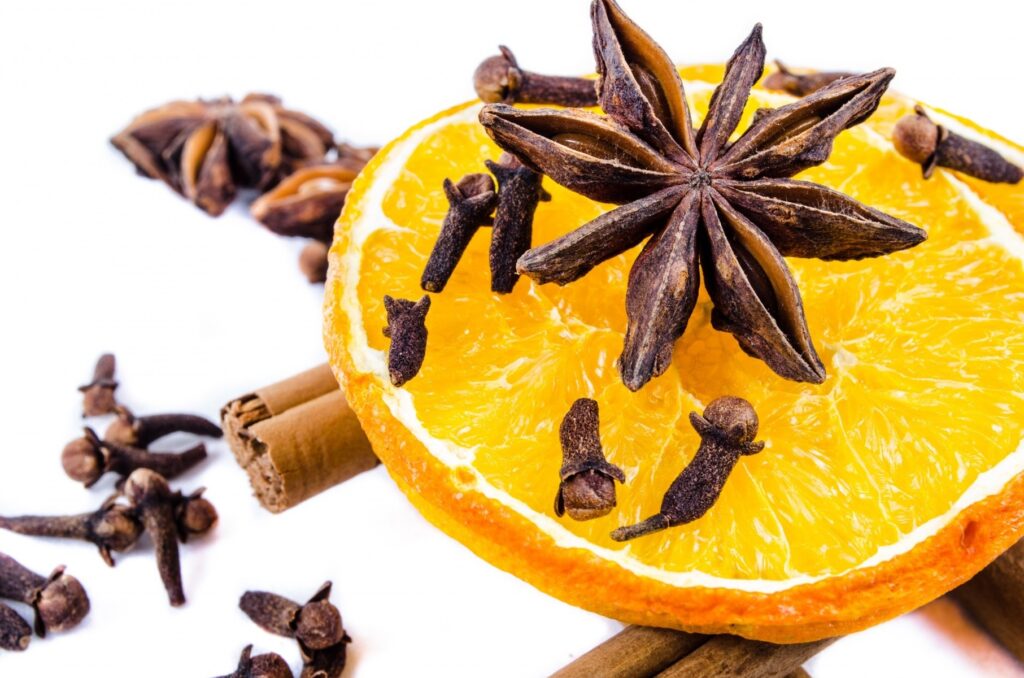
Anise is a popular and versatile spice often used in Mexican cooking. It has a sweet and licorice-like taste that can elevate the flavor profile of any dish to which it is added.
1: Versatility
Anise is a versatile spice that can be used in sweet and savory dishes. It is often used in Mexican dishes like mole sauce, pozole, and tamales. You can also use it in desserts like cookies, cakes, and pastries. Anise is also a popular ingredient in Mexican drinks like horchata and atole. Its versatility allows it to be used in different dishes and recipes, making it a must-have spice in every Mexican kitchen.
2: Improves Digestion
Anise is known for its medicinal properties and has been used for centuries to help digestion. It contains natural digestive enzymes that can help alleviate bloating, cramping, and indigestion. In Mexican cuisine, anise is often used in dishes high in fiber and protein, making it an ideal ingredient to help with digestion. Adding anise to your meals can help improve your digestive health and make your dishes more flavorful.
3: Flavor Enhancement
Anise has a distinctive sweet and licorice-like taste that can enhance the flavor profile of any dish to which it is added. It complements Mexican cuisine’s spicy and savory flavors, adding a unique and delicious taste to the dish. For example, adding anise to mole sauce can help balance the spiciness and create a more complex and flavorful sauce. It can also elevate the flavor of tamales and pozole by adding depth and richness to the dish.
4: A Natural Sweetener
Anise is a natural sweetener that can be used in place of sugar in many Mexican dishes. It gives an earthy sweetness to your meals without adding extra calories or artificial flavors. You can use anise to sweeten your drinks like horchata or add it to your desserts to create a more complex and rich flavor profile. Anise is a perfect sugar substitute and can be used in many Mexican food recipes.
5: How to Use Anise in Mexican Dishes
Anise is a pantry staple in Mexican cuisine, and there are many ways to use it in your favorite dishes. Here are some common ways to use anise:
- In mole sauce, add anise for a unique and complex flavor
- In tamales, add anise to the masa dough for a sweet and savory taste
- In horchata, use anise to sweeten and add a nutty flavor
- In pozole, add anise to the broth for a flavorful and aromatic taste
- In desserts, sprinkle anise over cakes and cookies for a sweet licorice flavor
Anise is among the best spices for Mexican food. Its unique flavor profile and health benefits can take your dishes to the next level. Try incorporating this versatile spice into your favorite Mexican recipes today!
Cumin
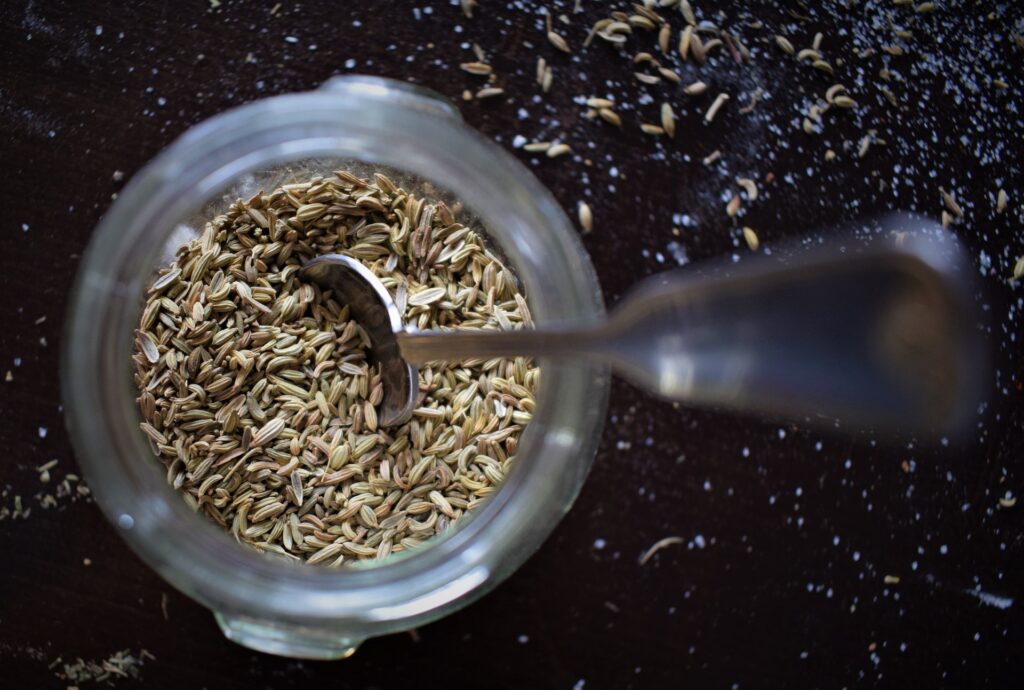
This warm and earthy spice has a unique taste that gives a distinct flavor to any Mexican dish, from tacos to enchiladas. While it may seem like a small ingredient, this spice greatly impacts Mexican food’s taste.
1: History of Cumin in Mexican Cuisine
Cumin has been an essential spice in Mexican cuisine for centuries. It was first introduced to Mexico by the Spanish during their conquest in the 16th century. Over time, cumin became a staple spice in Mexican cuisine, especially in the south and central regions. Today, it is widely used in various dishes like chili con carne, salsa, and guacamole.
2: Nutritional Benefits of Cumin
Apart from its delicious taste, cumin also offers various health benefits. It is a good source of iron and is believed to aid digestion, improve immunity, and lower blood sugar levels. It also has anti-inflammatory properties that help in reducing inflammation in the body.
3: Flavor Profile of Cumin
Cumin has a distinctly warm and earthy flavor with a slight bitterness. It is often described as having a smoky and nutty taste. This spice is a great complement to other Mexican ingredients like tomatoes, chilies, and onions. The best way to bring out its flavor is to toast it lightly before adding it to the dish.
4: Versatility of Cumin
One of the reasons cumin is the best spice for Mexican food is its versatility. It pairs well with different ingredients and dishes. It can be used to season meat, vegetables, or even rice. It’s also a key ingredient in Mexican spice blends like adobo, essential in making barbacoa and other popular Mexican dishes.
5: How to Use Cumin in Mexican Cooking
Cumin is best used in moderation to balance its strong flavor. It’s often added to chili con carne, tacos, enchiladas, and fajitas. You can also use it to season beans, soups, and stews. When using cumin, start with a small amount and adjust to taste. You can also grind whole cumin seeds fresh for a more intense flavor.
Its unique flavor, versatility, and numerous health benefits make it a great way to add depth and complexity to your dishes. Add cumin to your next Mexican recipe for a delicious and nutritious meal!
Avocado Leaves

These fragrant leaves are a staple in many traditional Mexican dishes and can take your cooking game to new heights.
1: What Are Avocado Leaves?
Avocado leaves are the leaves of the avocado plant, native to Mexico and Central America. They’re long, narrow, glossy, and deep green. Unlike the fruit, which is widely recognized and consumed, the leaves are often overlooked. However, they’re a vital ingredient in many traditional Mexican dishes, adding a subtle but distinct flavor.
2: Flavor Profile
Avocado leaves have a complex flavor profile that combines the earthiness of anise with a slightly sweet, floral note. It’s hard to compare them to other spices, but the closest comparison is perhaps bay leaves, with a hint of cinnamon. The leaves are often combined with other seasonings, such as cumin, oregano, and chili powder, to create a depth of flavor in Mexican dishes.
3: How to Use Avocado Leaves in Mexican Dishes
One of the easiest ways to use avocado leaves is to add them to soups and stews. They’re particularly delicious in bean dishes, such as black beans or lentil soup, providing a deep, smoky flavor that complements the beans perfectly. Simply add a few leaves to the pot, and remove before serving. You can also crush the leaves and combine them with other spices to make a seasoning blend. Mix avocado leaves with cumin, chili powder, and oregano for delicious taco seasoning.
Avocado leaves are also great for marinating meats. Mix crushed avocado leaves with lime juice, garlic, and olive oil to make a flavorful chicken, beef, or pork marinade. Allow the meat to marinate for at least an hour before cooking, and you’ll be rewarded with a tender, flavorful dish.
Another great use for avocado leaves is in rice dishes. Add a few leaves when cooking rice to impart a subtle, fragrant flavor that pairs perfectly with Mexican spices. You can also use avocado leaves to make herbal tea, which is said to have a calming effect on the body.
Avocado adds a subtle yet complex flavor to dishes that are hard to replicate with other spices.
Garlic Powder
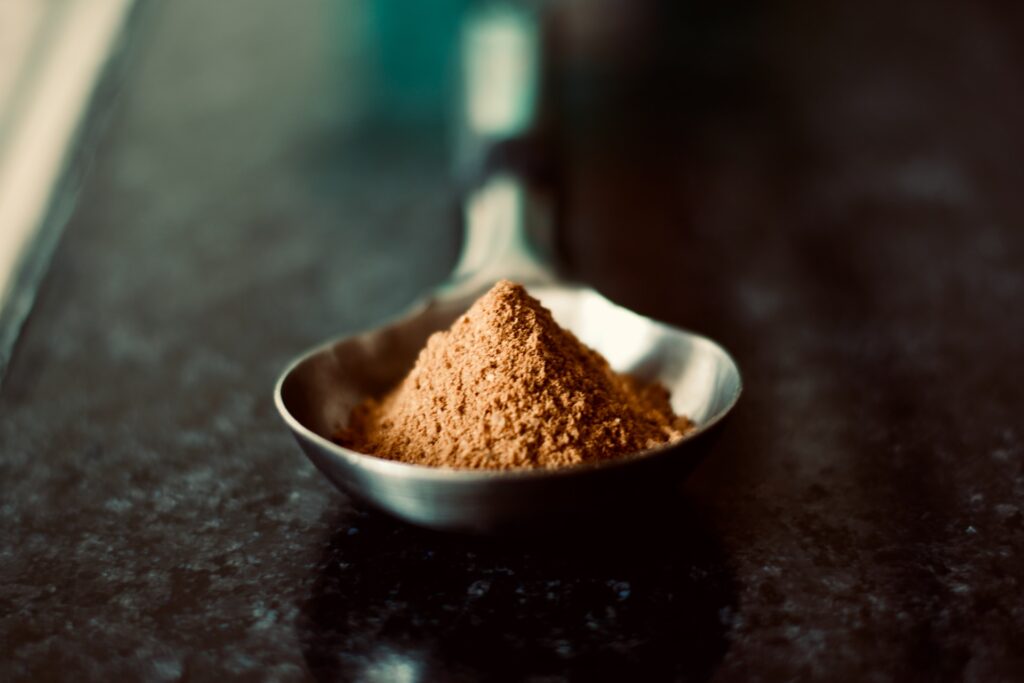
Garlic is one such spice commonly used in Mexican cuisine, and it’s not difficult to see why. It provides a powerful flavor boost to any dish it’s added to and has several health benefits too! However, using fresh garlic cloves can be time-consuming and messy. That’s where garlic powder leaves come in handy.
1: Enhances the Flavor
Garlic powder has a distinct strong flavor that pairs perfectly with Mexican cuisine. It adds depth and complexity to your dishes, making them taste richer and more satisfying. Garlic powder is perfect for marinades, rubs, and seasoning blends that can be used on different foods. Some traditional Mexican garlic powder dishes include Albondigas Soup, Arroz con Pollo, and Sopa de Fideo.
2: Keeps Your Dishes Light
Unlike fresh garlic, garlic powder has a milder flavor and aroma, which won’t overpower the other spices you use. This means you can use it in dishes and enjoy the benefits of garlic without weighing it down. It is particularly important in Mexican cuisine, where the use of spices is heavy-handed. Garlic powder helps balance out the flavors and keeps everything light.
3: Versatile
Garlic powder is versatile and can be used in all types of dishes. It can be used on meats, seafood, vegetables, and soups, giving each dish a different flavor. You can also experiment by adding garlic powder to unexpected dishes like tacos, quesadillas, and salsa!
4: Time Saver
In Mexican cuisine, garlic is often used in large quantities and can be time-consuming to prep. Garlic powder will save you prep time since you won’t have to peel, chop, or mince any garlic. It’s the perfect ingredient for busy cooks who want to quickly add flavor to their dishes.
5: Health Benefits
Garlic powder has many health benefits, including regulating blood pressure, reducing cholesterol levels, and boosting the immune system. Garlic powder contains allicin, which has been shown to help prevent heart disease and boost overall cardiovascular health. It is also a natural antibiotic and antifungal, perfect for combating infections and colds in winter.
Garlic powder leaves are an excellent flavor enhancer for any Mexican dish. With its potent flavor and health benefits, it’s no wonder why it has become the best spices for Mexican food.
Cinnamon
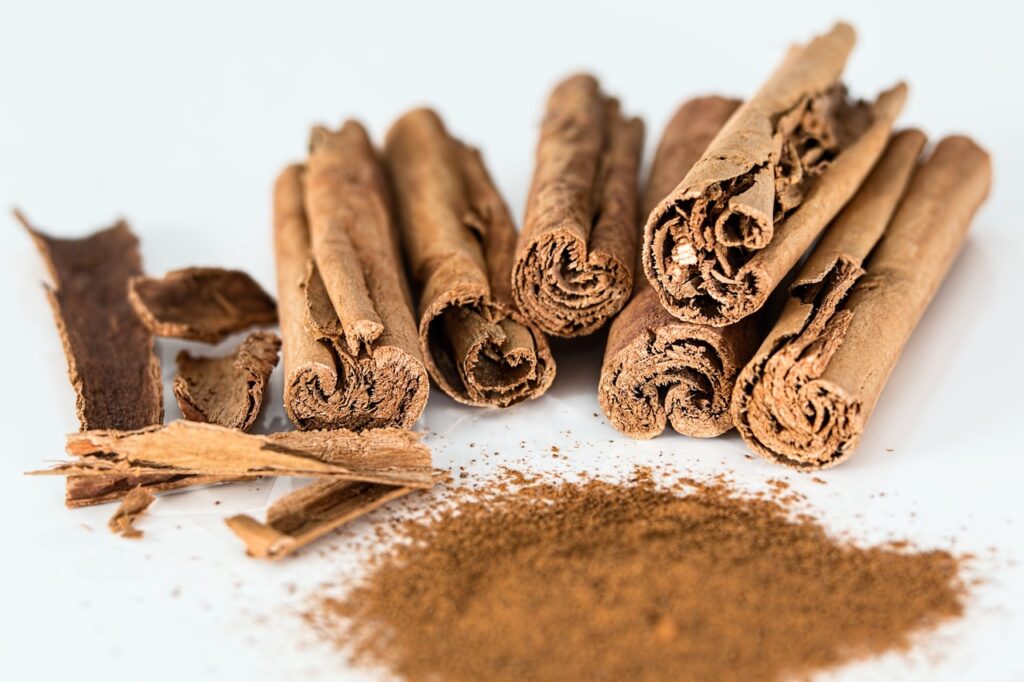
Although cinnamon is not native to Mexico, it has become an essential spice in Mexican cuisine, widely used in sweet and savory dishes.
1: Versatility in Sweet Dishes
Cinnamon is famous for adding sweetness and warmth to sweet dishes like Mexican hot chocolate, churros, and pan dulce. It is also essential in many traditional Mexican desserts like arroz con leche, a sweet rice pudding, and the popular holiday treat, buñuelos. Cinnamon’s delicate yet bold flavor makes it a popular choice when adding sweetness to traditional Mexican desserts.
2: Enhancing Savoury Flavours
Cinnamon isn’t only for sweet dishes. It’s also an essential spice when it comes to savory Mexican recipes. A Cinnamon pairs well with cumin and chili powder, commonly used in Mexican dishes. One such dish is mole, a traditional Mexican sauce that contains cinnamon, which infuses a rich, deep flavor into the dish. Additionally, Mexican stews and soups often use cinnamon to add richness and depth.
3: Health Benefits
Cinnamon is not only delicious, but it also has numerous health benefits. It has anti-inflammatory properties and helps regulate blood sugar levels, making it an ideal spice for those with diabetes. Additionally, cinnamon is packed with antioxidants and has been shown to boost brain function.
4: Easy to Find and Use
Cinnamon is widely available and easy to find. You can buy it whole or ground, making it convenient for Mexican dishes. It’s also easy to use, and a little goes a long way. Whether you’re making a savory Mexican stew or a sweet Mexican dessert, you can easily add cinnamon to enhance the flavor of your dish.
5: It Brings People Together
Mexican food is all about bringing people together, and cinnamon adds warmth and comfort to a Mexican meal. A warm cup of Mexican hot chocolate or a traditional Mexican dessert with cinnamon can be the perfect ending to a family meal or a festive celebration.
Its ability to bring warmth and sweetness to savory and sweet dishes makes it the perfect spice for Mexican food. Whether you’re using it to add flavor to a savory stew or infusing it with sweetness in a dessert, cinnamon is among the best spices for Mexican food.
Coriander
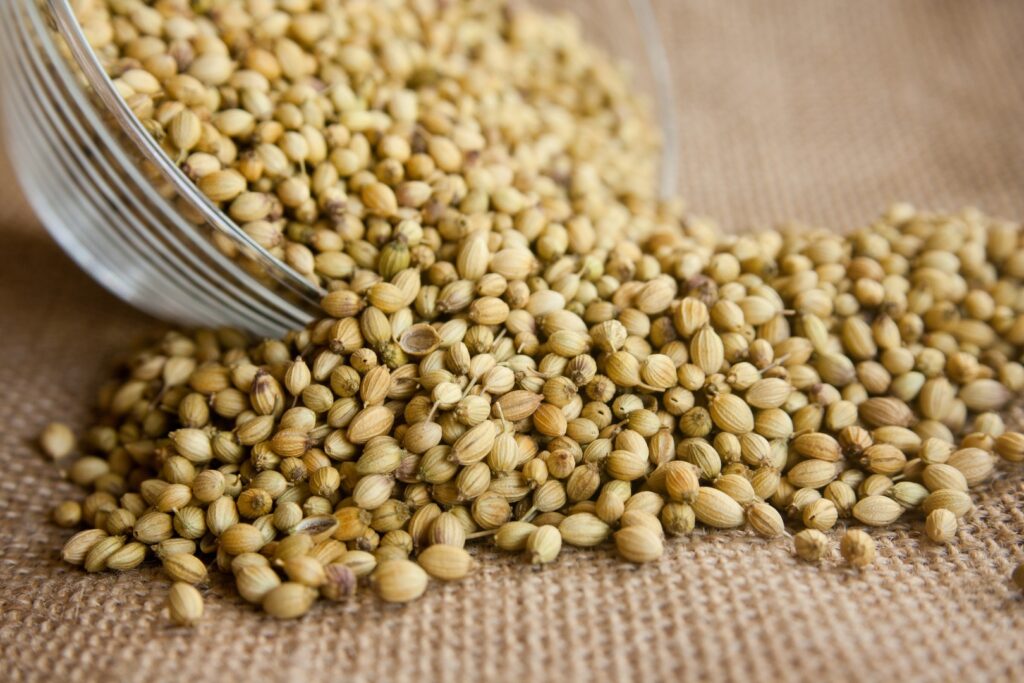
Out of all the spices, coriander stands out for its versatile and unique taste. It’s no wonder it’s considered the best spice for Mexican food. In this blog post, we’ll explore the wonders of coriander and how it adds that extra spice to your favorite Mexican dishes.
1: Versatile Flavor
Coriander adds citrusy and slightly sweet flavors to any Mexican dish. Its unique and subtle taste is perfect for balancing out the heat from spicy peppers while enhancing the other flavors. Coriander is versatile, making it an excellent spice for savory and sweet dishes. It’s commonly used in marinades, rubs, salsas, and guacamole. Its versatility makes it a staple spice in Mexican cuisine.
2: Nutritional Benefits
Coriander isn’t just a great spice for adding flavor to Mexican food. It also has some impressive nutritional benefits. It contains vitamins and minerals such as vitamin C, calcium, potassium, and manganese. It’s also known for its anti-inflammatory and anti-bacterial properties, making it an excellent addition to any dish for a health-conscious lifestyle.
3: Natural Medicine
Coriander has been used as a natural medicine for centuries. In traditional Mexican medicine, coriander seeds treat digestive problems like gas and bloating. It’s also believed to be an effective remedy for high blood pressure and cholesterol. Coriander leaves also have detoxifying properties, making them a great spice to add to your meals if you want to cleanse your body.
4: Easy to Use
Coriander is easy to use in any Mexican dish. Add its finely ground powder to sauces or sprinkle on tacos or enchiladas. The seeds can be toasted and ground to make a homemade spice blend for marinating meat, chicken, or fish. Furthermore, coriander leaves, or cilantro, can be used as a garnish or mixed into salsas and guacamole for a refreshing flavor.
5: High Demand
Coriander is in high demand globally, making it available in almost every grocery store. It’s a spice that’s used in many different cuisines worldwide, but it’s undoubtedly a vital spice in Mexican cuisine. Its unique and versatile flavor has made it a superstar, and it’s one of the few spices that can transform a good Mexican dish into an amazing one.
Whether it’s sprinkling coriander powder on your chicken, adding coriander seeds to your salsa, or garnishing your guacamole with cilantro, coriander will add that extra touch of spice that all Mexican food lovers crave.
Mexican Oregano

Mexican cuisine is widely celebrated for its bold flavors and vibrant spices. From fiery chilies to earthy cumin and tangy lime, it’s no secret that Mexican food calls for some serious seasoning. But among all the herbs and spices that make up this wonderful culinary tradition, there’s one ingredient that never fails to stand out: Mexican oregano.
1: What is Mexican Oregano, and What Makes it Unique?
Mexican Oregano is a culinary herb that belongs to the Lamiaceae family. It has a unique flavor profile unlike the Mediterranean oregano that most people are familiar with. Mexican oregano is earthier with citrusy and slightly sweet undertones, and it’s more intense than Mediterranean oregano. It grows naturally in Mexico, the southwest United States, and other parts of Central and South America.
2: Versatility of Mexican Oregano in Mexican Dishes
Mexican Oregano is a key ingredient in many classic Mexican dishes, including chili con carne, salsa, and marinades for meat, poultry, and fish. Its distinctive flavor profile blends well with other spices, such as cumin, coriander, and paprika, and elevates the taste and aroma of the dishes. Many Mexican chefs also use Mexican oregano in soups, stews, and other traditional dishes to add an earthy and aromatic taste.
3: Health Benefits of Mexican Oregano
Mexican oregano has some impressive health benefits, making it even more appealing as a spice. It is rich in antioxidants and believed to help improve digestion and respiratory health. Mexican Oregano has also proven effective in lowering glucose levels in people with type 2 diabetes. Its anti-inflammatory and antimicrobial properties also make it a popular natural remedy for managing pain and fighting infections.
4: How to Use Mexican Oregano in Your Cooking
Mexican Oregano is readily available in most grocery stores and can be found in dried and fresh versions. The dried version is more potent and has a long shelf life, making it the best option for long-term use. Adding it towards the end of the cooking process is best to prevent the flavors from overpowering the dish. However, Mexican chefs recommend using fresh Mexican Oregano in dishes that require a subtle infusion of flavor, such as cocktails and dressings.
5: Other Useful Tips for Cooking with Mexican Oregano
When using Mexican Oregano, it is recommended to crush it lightly with your fingers to release the herb’s aroma. It is also an excellent addition to rubs for barbequed or grilled meats, adding an extra layer of flavor to the dish. Additionally, you can use Mexican oregano to make tea by steeping the dried leaves in hot water for several minutes to create a soothing herbal and medicinal tea.
Although there are many exotic spices, it’s easy to see why Mexican Oregano is considered the best spice for Mexican food. Once you try Mexican oregano in your cooking, we bet you will never return to the ordinary.
Frequently Asked Questions
What makes Mexican cuisine unique?
Thanks to its diverse spices and ingredients, Mexican cuisine is known for its bold and vibrant flavors. Mexican food also blends indigenous and European influences, resulting in a unique fusion of flavors. This cuisine is also known for using fresh herbs, such as cilantro and parsley, and its incorporation of fruits, such as mango and pineapple.
What is Mexican allspice?
Mexican allspice, also known as pimenta dioica, is a spice that is commonly used in Mexican cuisine. This spice is derived from the berries of a tree native to the Caribbean and Central America. It has a warm and spicy flavor, similar to a combination of cinnamon, cloves, and nutmeg. Its use is prominent in mole sauce, a popular Mexican sauce made with peppers, chocolate, and spices.
What is the base of Mexican food?
The base of Mexican food often involves a blend of traditional Mexican spices like chili peppers, beans, corn, and rice. Corn tortillas, a staple in Mexican cuisine, are often made by blending corn flour and water. Mexican cuisine also features various chili peppers, which offer heat and flavor. These include chili ancho, chili guajillo, and chili pasilla. Besides, beans and rice often accompany other Mexican dishes like tacos, burritos, and enchiladas.
Are there any vegan options in Mexican cuisine?
Yes, Mexican cuisine is full of vegan options. One of the most popular vegan Mexican dishes is “pico de gallo” a fresh and healthy salsa made from tomato, onion, and cilantro. Another vegan option is traditional “guacamole” made with avocado, onion, and lime juice. Additionally, beans are an essential and versatile ingredient in Mexican cuisine and can be used in various vegan dishes.
How healthy is Mexican cuisine?
Mexican cuisine can be very healthy, depending on what dishes you choose. Many dishes are packed with protein and fiber from beans and vegetables, which can be particularly beneficial for a healthy diet. However, some Mexican dishes can be high in calories, fat, and sodium, especially if they are fried or stuffed with cheese. So, while Mexican cuisine is a healthy choice for the most part, it’s essential to be mindful of the ingredients when making your selections.
Final Words
The best spices for Mexican food mentioned above can turn an ordinary meal into a culinary adventure filled with bold and refreshing flavors. Each spice has a unique role in elevating your Mexican-inspired dishes to the next level. So the next time you’re in the kitchen, don’t be afraid to experiment with a few new spices and see what delicious concoctions you can whip up. Enjoy!

